23 Types Of Cured Meat, Explained
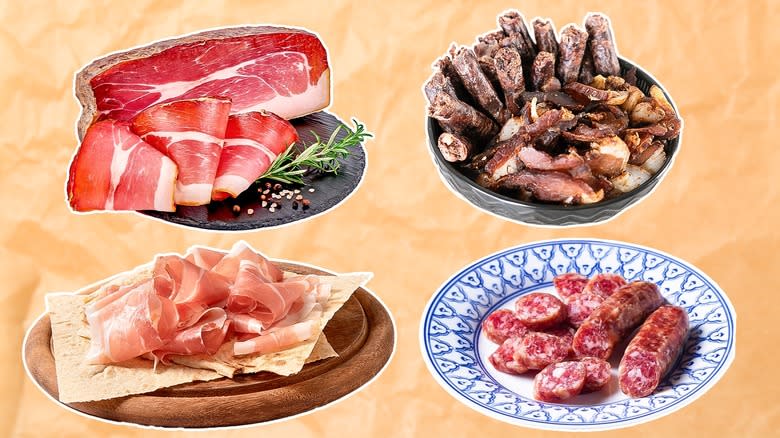
For much of human history, preserving food was a literal matter of life and death: If you didn't, you'd be at risk of starvation. With modern refrigeration and food transportation, that's not the case anymore, but we still preserve food. Why? Because these cured, dried, smoked, fermented, and pickled foods are some of the most loved and intensely flavored foods.
Consider cured meats. You'd be hard-pressed to name a culinary culture anywhere in the world that doesn't have a handful of local specialties, each showcasing local ingredients and local preferences. That charcuterie board you set out at your last party represents the end result of thousands of years of refinement and the efforts of thousands of brilliant but unremembered artisans.
As a trained chef and former restaurateur, I'm well acquainted with the cured meats of the world and have cured meats for my own restaurant (I still miss that boar bacon!). Doubtless, each of you has favorites of your own, but here are 23 cured meats — some familiar favorites and some less so — that you should know.
Read more: The Best Meat For Your Charcuterie Board Isn't One You'd Expect
Saucisson Sec
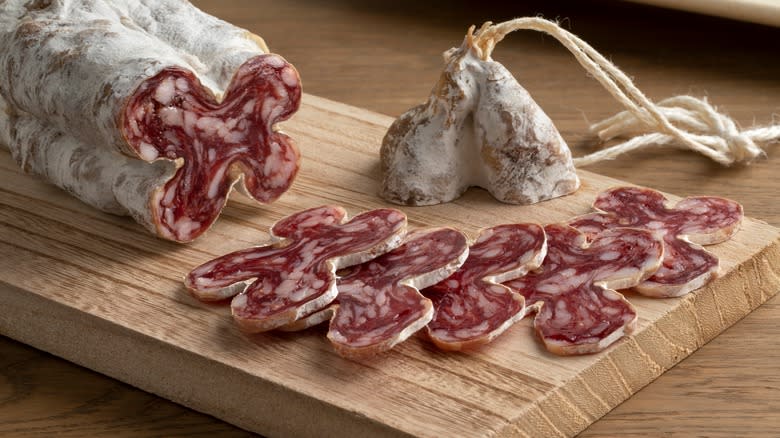
The French might not be the first people you think of in connection with salami-style dry-cured sausages, but their expertise goes back at least to Roman times. You'll find French saucissons secs in a variety of sizes, shapes, and styles to meet any taste. Every region has its distinct specialty: A saucisson sec from Lyon is relatively coarse and has large pieces of fat (lardons) through it, while the Alsatian style is more finely minced and salami-like. Whichever style you choose, it's definitely a type of meat that belongs on your charcuterie board.
Speck
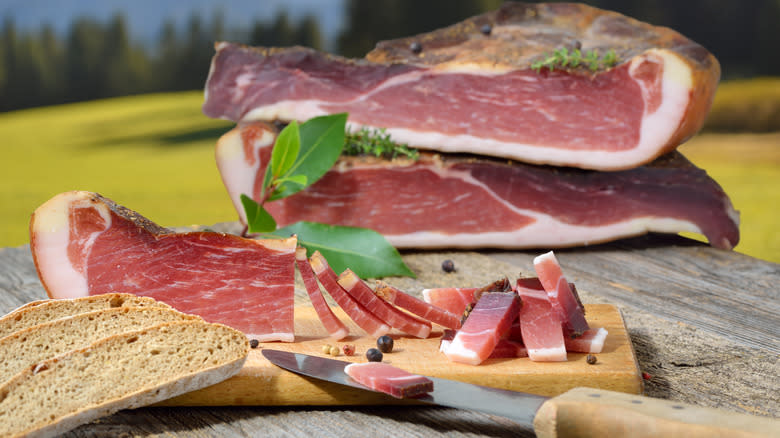
In North American supermarkets, it's easy to distinguish between bacon and ham, but elsewhere, the line sometimes blurs. That's the case with speck. In Germany, it's used as a sort of catch-all term for bacon, but in its heartland — the Alpine regions where Austria, Switzerland, southern Germany, and northern Italy meet — it refers to a dry-cured slab of pork from the hog's thigh, salted, dried, and smoked in the thin, cold mountain air. Enjoy it thinly shaved and uncooked, like prosciutto, or crisped and rendered to add flavor to your recipes. You may even decide it's better than bacon.
Biltong
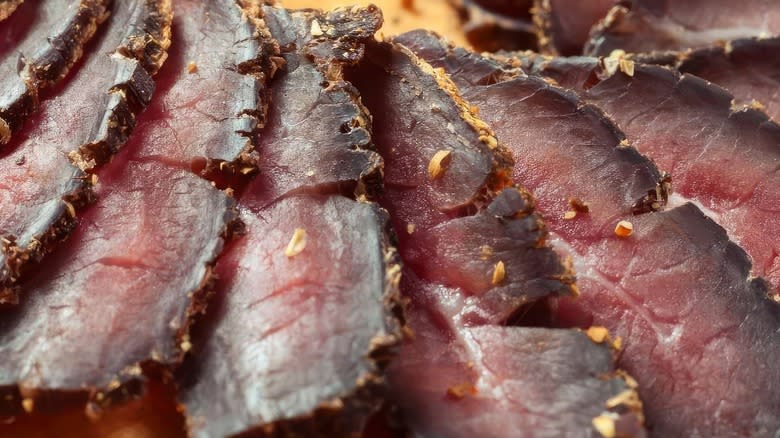
Most of us love jerky, though we don't necessarily equate it to the kind of cured meats we'd see at the deli. The popular snack food has its equivalents all over the world, and one version that's begun to catch on in America is biltong. This is the South African version of jerky, and like jerky, it is typically made with beef (although traditionally, game meat is also used). There are a few distinct differences between biltong and jerky: Biltong is always air-dried and not dehydrated, and it's first given a vinegar-based marinade, which lends a tang to the finished product.
Yunnan Hams
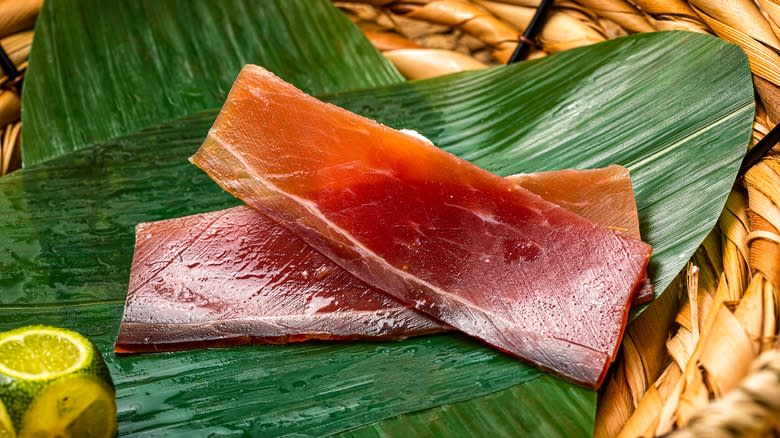
Europe has several famous dry-cured hams, but pork-loving China is no slouch in this department either. That sprawling country's best-known ham-producing region is Yunnan province, and its top-tier hams, like Xuanwei and Nuodeng, can go toe-to-toe with anything coming from Spain or Italy. In China, these hams (and the equally famous Jinhua ham, from Zhejiang province) are used to add flavor to cooked dishes, as Americans do with country hams. They can also be shaved thinly and eaten raw, like prosciutto, but you'll need to try them when traveling; import restrictions mean they can't be sold in America.
Lap Cheong
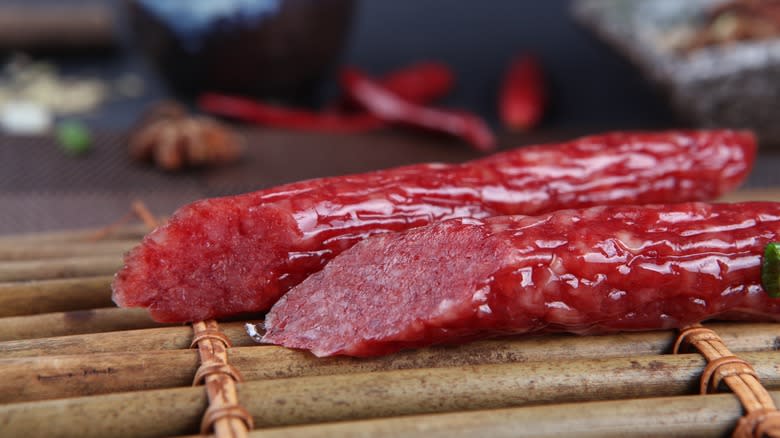
If you love the flavors of Chinese food and also love the deep, nuanced meatiness of dry-cured sausages, we have good news for you: You can get both in one package. This style of sausage is called lap cheong. It's a relatively skinny sausage, long and thin, made with coarsely chopped pork and pork fat. Its texture is chewy, and like a good salami, the longer you chew it, the more flavor is released. There's sugar in the curing mixture, so it brings the same sweet-and-savory balance along with the added depth and complexity that come with dry aging. This one isn't eaten as-is; but you can steam it to enjoy on its own or cook it to render out its savory fat and act as a flavoring ingredient.
Jamón Ibérico
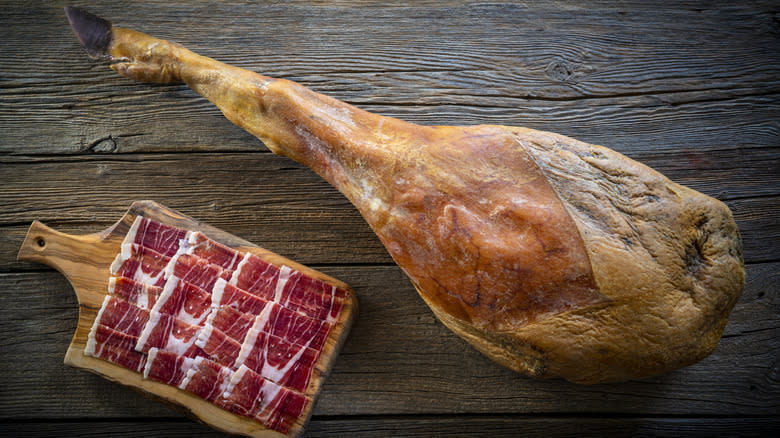
Prosciutto may be the world's best-known example of dried ham, but Italians proclaiming it the world's best will hear many arguments from other countries. One is Spain, which boasts an equally long history of ham production. The very best is jamón Ibérico, produced only in one designated region of Spain from its heritage breed Ibérico hogs. They live in the area's oak forests, gorging themselves in autumn on high-calorie acorns, giving them their distinctively fatty finish and signature flavor. Sadly those oak forests are faltering in the face of climate change, so enjoy jamón Ibérico while you can.
Basturma (Aka Pastirma Or Bastirma)
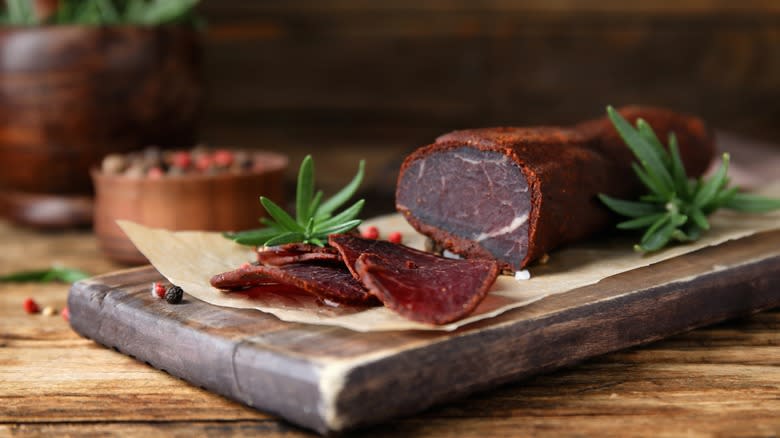
Dry-cured hams are some of the world's most cherished food products, but not everyone eats pork. Throughout the Middle East and into Asia, the alternative to prosciutto and other cured pork products is a form of dry-cured beef called basturma. It's thought to be Turkish or Armenian in origin, and during Turkey's centuries as a major empire, it spread across most of what is now the Islamic world. Lean beef is rubbed with spices, including salt, pepper, and fenugreek, and then dried to a firm texture. Then, it's sliced thinly and eaten raw or cooked like bacon to flavor other foods. It's also thought to be the historical inspiration for modern pastrami.
Guanciale
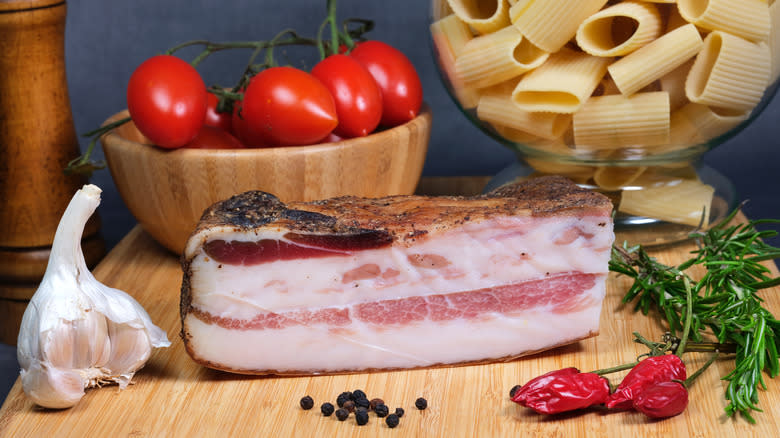
Prosciutto may be the best-known of Italy's dry-cured pork products, but the country makes bacon as well as hams. The one you'll see frequently in stores is pancetta, but there's a richer version called guanciale that's worth seeking out. Unlike most other forms of bacon, it's made from the cheeks of the animal (that's right, Southerners, we're talking about hog jowls over here!). Like pancetta, guanciale isn't smoked. Instead, its long curing time gives it a deep and distinctive funk, which — because guanciale is rich and fatty — the flavor releases as it cooks, flavoring classic dishes like carbonara.
Bresaola
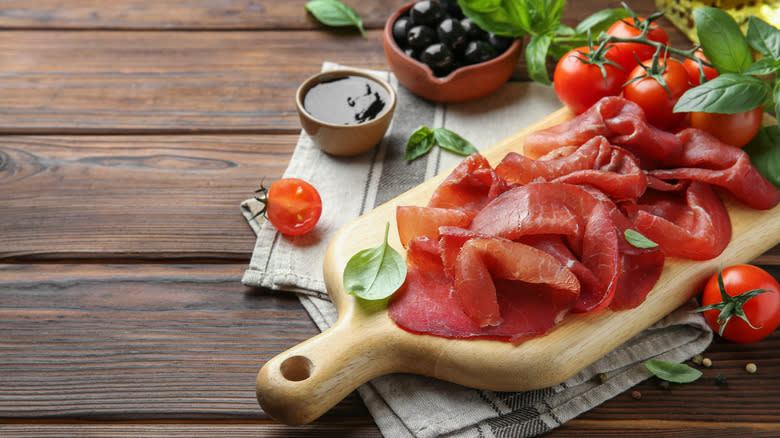
Most charcuterie is traditionally made with pork, but there are exceptions, even in countries where there are no religious motivations to avoid pork. In the rich, rolling valleys of Lombardy, where cattle are traditionally raised, there's a prized form of dry-cured beef called bresaola. It carries the flavors of the local wines and spices, such as black pepper and juniper berries, and has a distinctively rosy-red color. It can be thin-shaved and eaten like prosciutto, and it's an equally good pairing with melons, but you can also treat it as a dry-cured carpaccio with crusty bread and a drizzle of oil and lemon juice.
Sopressata
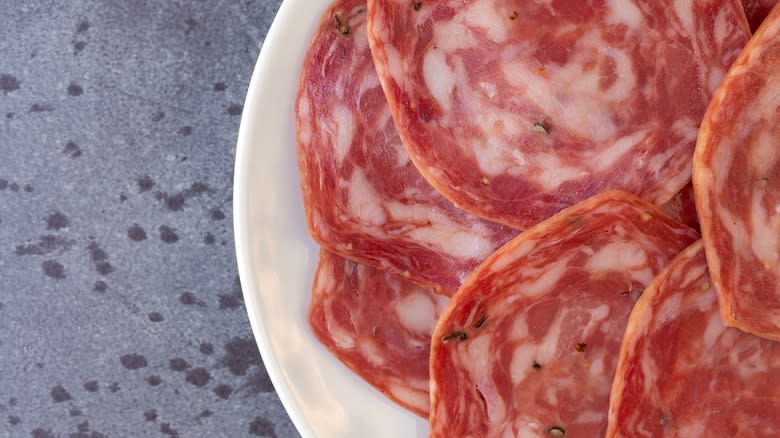
If you're looking for an alternative to the same old handful of salamis you usually serve your guests (or yourself), consider giving soppressata a shot. It's an interesting alternative to those usual options and brings in some visual contrast. It's a coarse-textured sausage, using relatively big chunks of lean pork and fat, but what makes it visibly distinct is that it's pressed (hence the name), often giving it an unusual flattened or oblong cross-section. Like Brie cheese or many of the other meats on this list, it develops a "bloom" of beneficial white mold on the outside that helps to cure the pork and add flavor. The best-known version of soppressata is the Calabrian, which adds dried red peppers to the meat for a bit of oomph.
Droëwors
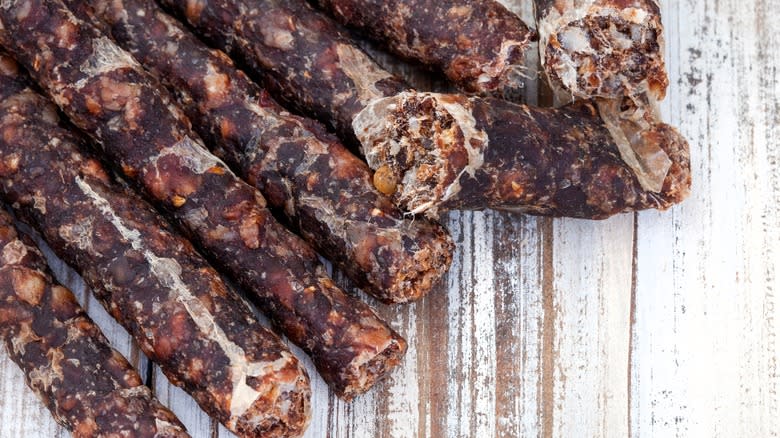
South Africa's culinary scene remained a mystery to most Americans for decades, when that country was an international pariah because of apartheid, but it's coming to be appreciated now. South Africa's famous boerewors sausage, for example, is increasingly available here. The cured version of boerewors is called droëwors, and it's worth seeking out if you can find it. Like the fresh sausage it's typically made with beef or game, but it's thinner so the links will cure reliably without spoiling. The meat mixture is flavored with vinegar and spices, and then hung until leathery-dry. It's hard to find in North America, but enthusiasts can make their own or look for it anywhere there's a South African butcher.
Lonza And Lonzino
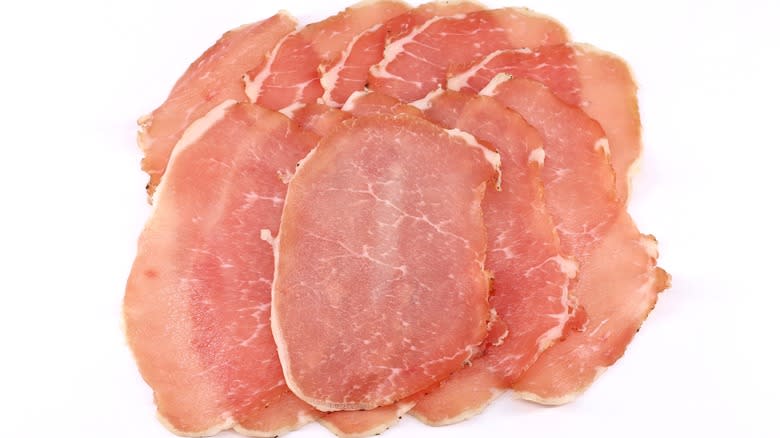
If you look at cured meats in general, they tend to fall into two categories. Sausages are made with unloved tough cuts and leftovers, while whole-muscle cured meats skew toward tenderer cuts, which won't give your jaw such a workout. That's the case with lonza and lonzino, two kinds of cured pork made from the loin or tenderloin of the hog. They're not unlike capicola, which is logical. Capicola is the part of the loin muscle that extends into the shoulder. Regional variations come in many shapes, from cylindrical to oblong to oddly irregular, and in varying degrees of leanness, but they're all worth trying if you see them.
Bündnerfleisch
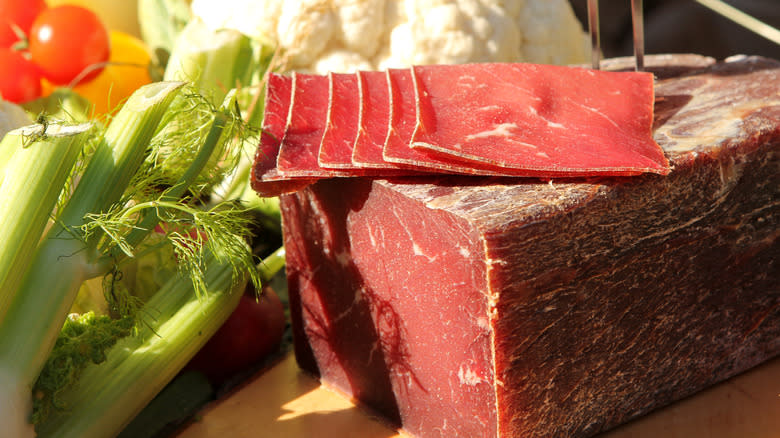
Bündnerfleisch is another memorable example of charcuterie made from beef rather than pork. It hails from the German-speaking Swiss canton of Graubünden and is somewhat similar to the bresaola of nearby Lombardy. The herbs, spices, and wine used in the cure are slightly different from those used in bresaola, but the biggest difference is that Bündnerfleisch is pressed as part of the curing process to help remove moisture from the flesh more quickly. This gives it a firmer texture and a deeper, more concentrated flavor. It's shaved paper-thin and eaten on bread, served with raclette, or occasionally added to soups and other dishes as a flavoring element.
Prosciutto
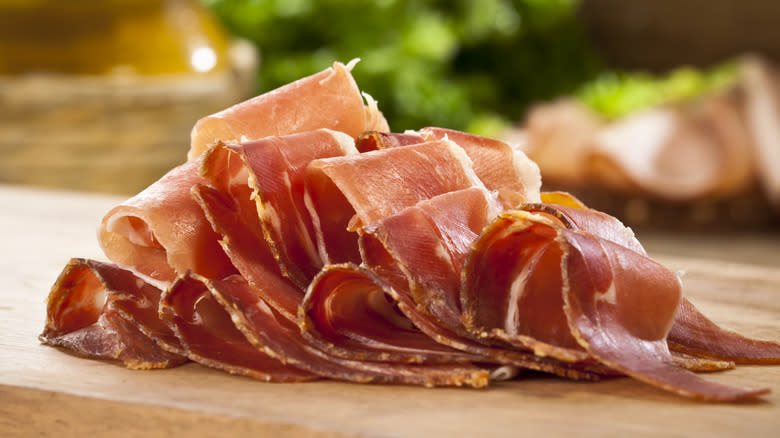
Prosciutto needs little introduction. Aside from homegrown country hams, it's the dry-cured ham most Americans are likely to encounter first. It's worth noting that there can be a wide difference in quality between ordinary supermarket brands and the ones you can find in specialty Italian or gourmet shops. Some are aimed at the mass market, but the very best ones — the ones that carry Italy's DOP or IGP certifications, meaning they're produced in specific regions using traditional methods — are genuinely memorable. Prosciutto di Parma and di San Daniele are the best-known of those and the most generally available in the US, but other regional versions from Tuscany, Modena, and the Veneto are also worth trying if you have the opportunity.
Bayonne Ham
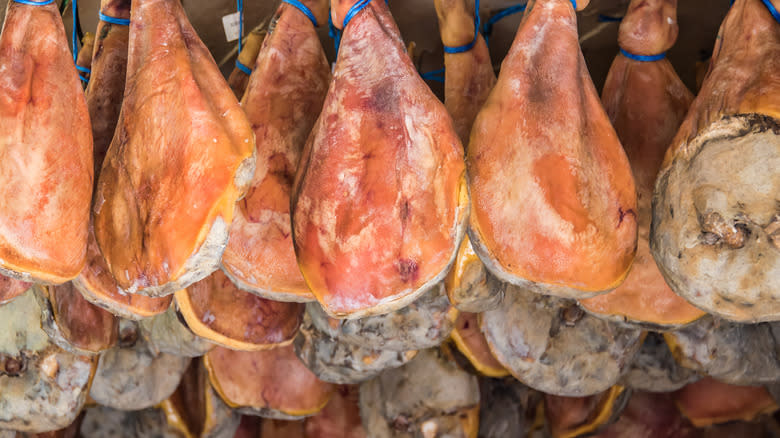
The French bristle at the idea of taking a back seat to anyone in culinary matters, and they also produce especially fine dry-cured hams. These hams have a long history; they're thought to trace back to pre-Roman Gaul. We know them as Bayonne hams, though they're not produced in that port city but in the Basque country on the French side of the Pyrenees. It's a region drained by the Adour River, which meets the Atlantic at Bayonne in France's southwestern corner. The hams are cured with locally-produced salt and pork under stringently controlled conditions, and their quality is exceptionally high. If you see it at a local deli, buy some: It will make a nice upgrade for your next charcuterie board.
Spanish Chorizo And Portuguese Chouriço
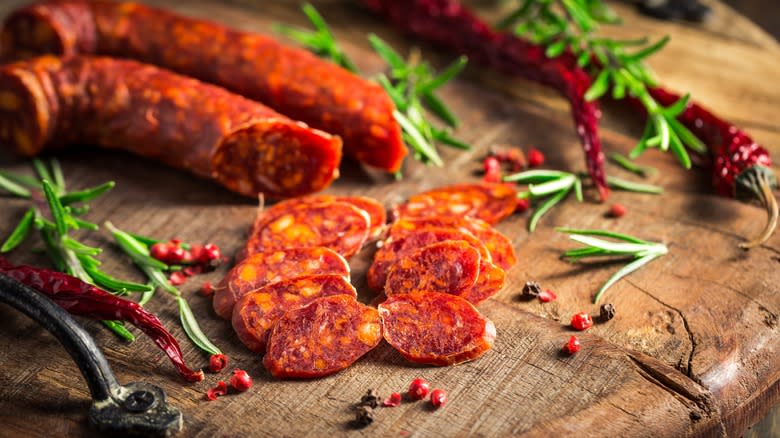
Spanish chorizo doesn't get as much love as it should. Mostly, you'll read about it in articles explaining that, no, it's not at all like the Mexican kind. That's a shame because it's a fine sausage worth frequently using. Like its Portuguese counterpart, chouriço, Spanish chorizo is a dry-cured sausage created with coarsely ground pork and pork fat mixed with copious quantities of garlic and paprika. In short, it's a flavor bomb. It's beautiful on its own, just sliced thinly and eaten with bread or cheese, but it really comes into its own when it's cooked, and the rendered fat infuses the rest of the dish with richness and flavor.
Hungarian Salami
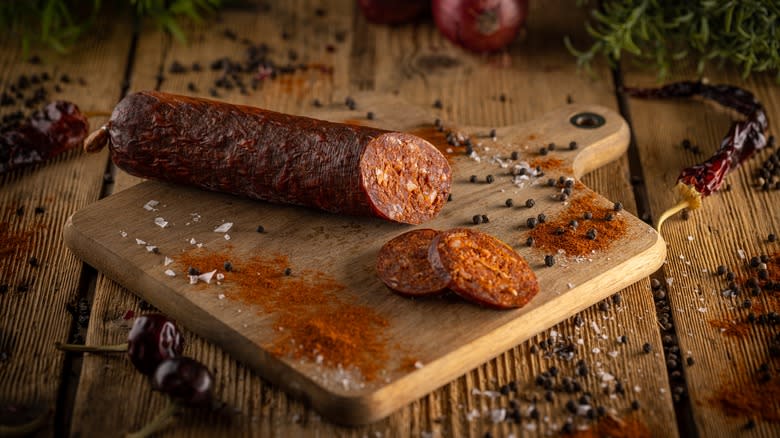
Hungary is known for a lot of things, and one of the quirkiest is its hogs. You'll know them on sight because the heritage Mangalitsa breed has a distinctively long, tousled coat of fur. They yield a flavorful pork with plenty of fat, which is what's used in Hungarian salami. In top brands, the pork is hand-chopped rather than ground and seasoned with a broader range of spices than you'll find in many better-known salamis. Key among them is paprika: Hungary grows some of the world's best, and the city of Szeged is a center of both paprika and salami production.
Landjäger
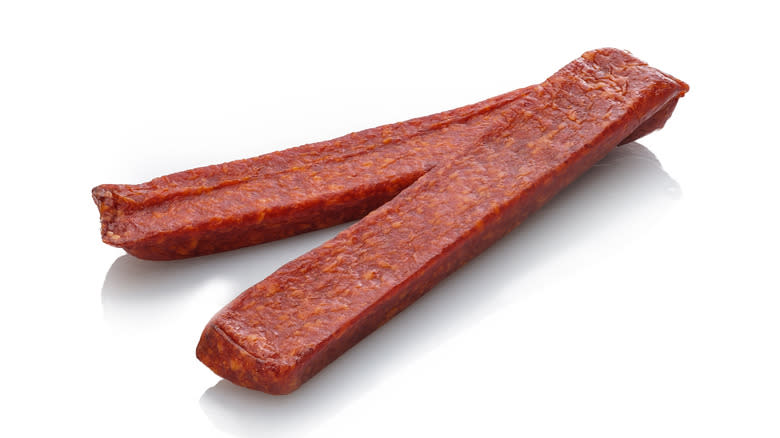
The Germans have no lack of interesting sausages, and you could easily make a case that they're the world's greatest sausage lovers. Landjäger is one of those sausages, though it's not exclusively German; it's made in Austria, Switzerland, and Alsace as well. It's a narrow pork sausage made in links about 8 inches in length, and it's both smoked and dry-cured, so it can remain edible at room temperature. Like bündnerfleisch, it's pressed during the curing process, giving it a squared cross-section and dense texture. As the name suggests, it was a popular food for hunters (jäger means hunter), and it remains a great hiking snack due to its durability and light weight.
Genoa Salami
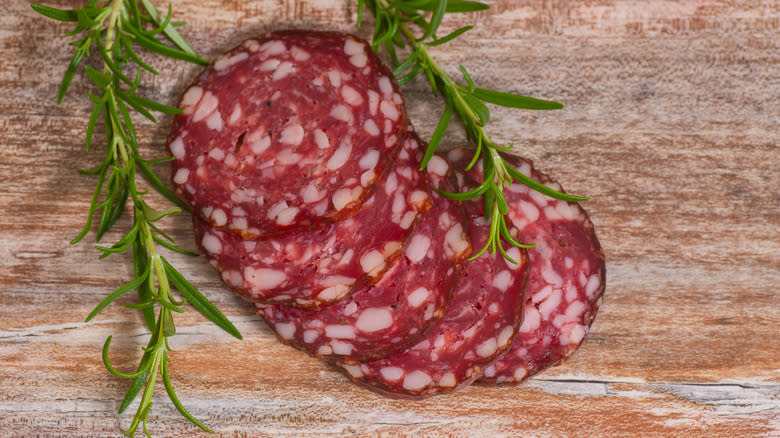
The flabby, limp mass-market salami sold at supermarkets for sandwiches or pizza topping bears little resemblance to the good stuff from Italy. Almost every region has its distinctive version of dry-cured salami, but the best known and the most available here — the one you likely tried first — is Genoa salami. It's made with coarsely ground pork, with a distinctive combination of added flavors from garlic, fennel, and the local wine. Then, it's dried and fermented, gaining a coat of beneficial white mold that helps extract moisture and concentrate its flavors. Other Italian deli meats may cost more and have bigger reputations, but Genoa salami is always worth including in your trays or sandwiches.
Schwarzwälder Schinken
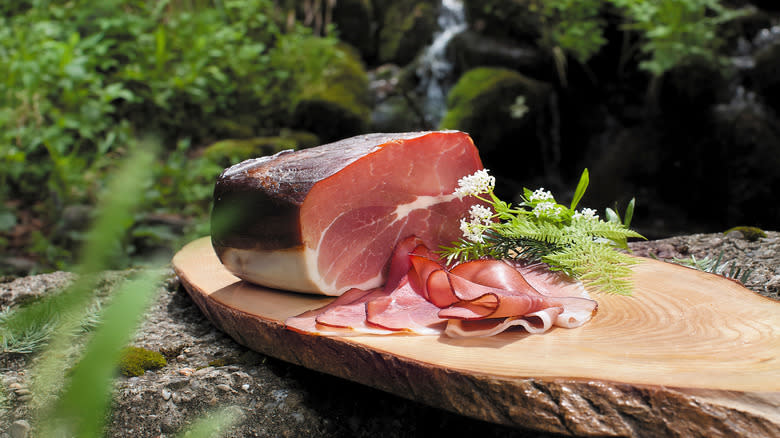
Almost any deli counter you visit will have something called "Black Forest ham." It's slightly less watery than normal supermarket ham slices and has a black rind around the outside, but it's not...special. Schwarzwälder Schinken is the real deal, originating in the Black Forest region which extends east from the university town of Freiburg in Southern Germany. It's a dry-cured ham, like those from Spain or Italy, but unlike those, it's heavily smoked for a deep and potent flavor. Smoking also gives it a blackened exterior, which is what the supermarket versions mimic. It's hard to find but worth seeking out.
Country Ham
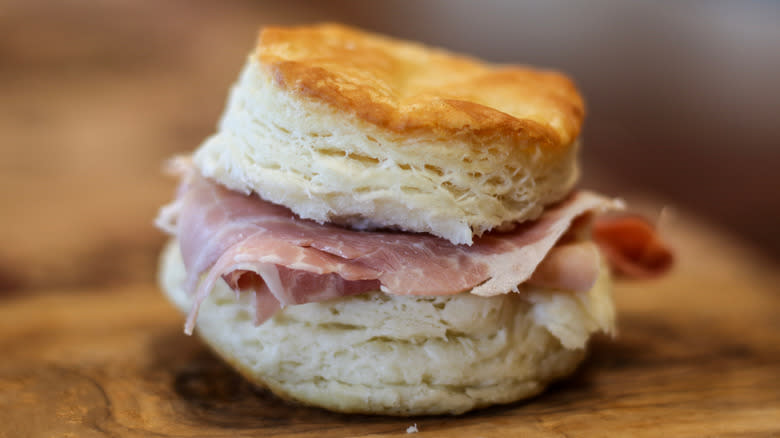
America has its own dry-cured hams, which can be just as interesting in their way as Italy's prosciutto or Spain's Serrano hams. Those are country hams, which share little with the more common water-brined city hams. Country hams, in contrast, go through an elaborate curing process that leaves them dense and flavorful, like their foreign counterparts. They've traditionally been soaked to tone down their saltiness and then cooked in the same manner as their city ham counterparts, but they can also be thin-shaved and eaten raw like prosciutto. There's been a chef-driven trend over the past few years to do just that.
Mortadella
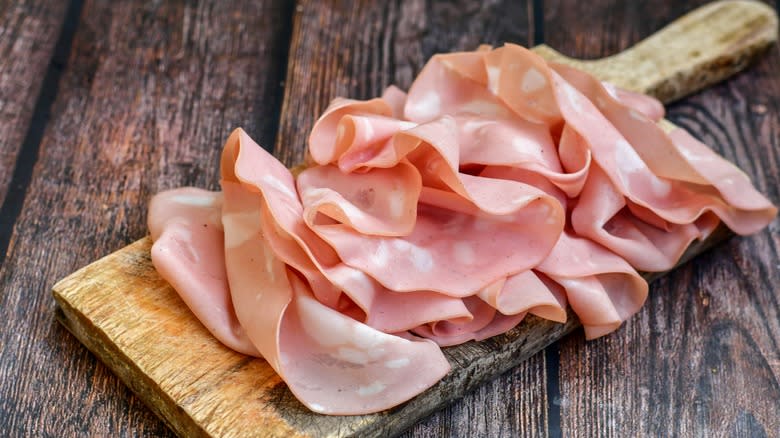
Some of the meats in deli cases look tasty even to the untutored eye, with deep hues that show long and careful curing. Others — bologna, olive loaf, and their like — are the opposite, looking like mass-produced sandwich fillers they are. Mortadella may look like it belongs in the second category, but in truth, it decidedly ranks among the "good stuff." This is the original "Bologna sausage," the inspiration for the American kind, but it's very different from the familiar lunchbox staple. Good mortadella has a finer texture and a much more refined flavor, and it's studded with large pieces of intact fat (and occasionally pistachios as a garnish). Don't let memories of grade school turn you off: Mortadella fully deserves a place on your plate.
Kabanos
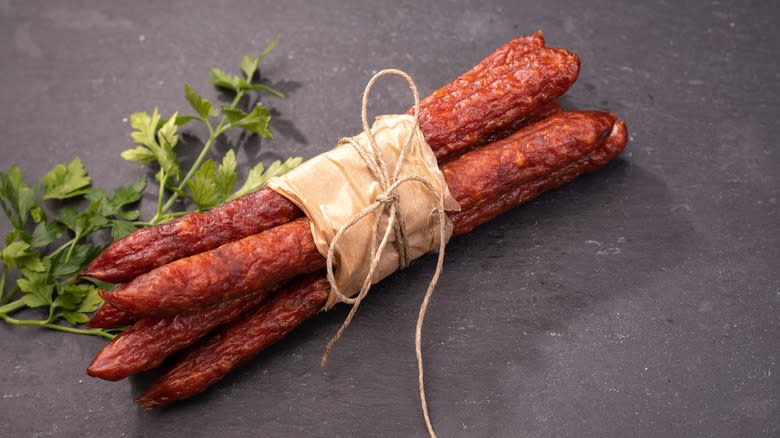
If you live in a city with a strong ethnic Polish heritage, take a look through Polish delis and butcher shops for kabanos sausages. They're a pork sausage made in a relatively small sheep casing and with an unusual production process: They're smoked and then cooked fully (traditionally in the smokehouse) and only then, once cooled, hung to dry. The result is a sausage that will last for a long time at room temperature, with the bold flavors of garlic, black pepper, caraway, and a hint of nutmeg. Like landjäger, it's a great lightweight snack to carry along on trail hikes or other expeditions.
Read the original article on Tasting Table

